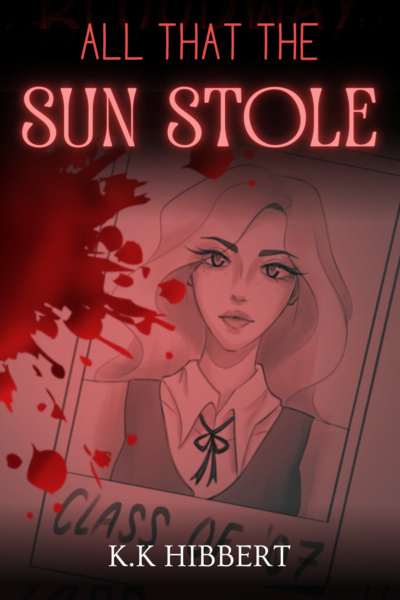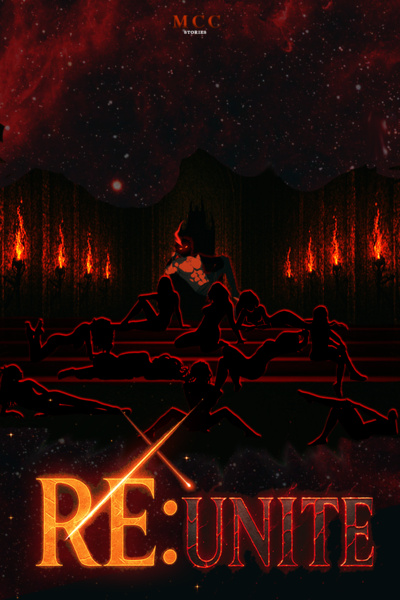Supernatural novel

-
The Last Taoist II / author:Favorite Count MISIC
- Note: This book is also known as "The Past of the Taoist Gate", and is a new masterpiece in the series "The Last Taoist".In the beginning, there was only one thread of life. The Great Way gave birth to fifty, heaven gave birth to forty-nine, leaving one behind. The Way gave birth to one, one gave birth to two, two gave birth to three, and three gave birth to all things; all things have life and death, or life or death, or death or life, all are transformed by the creator.In the red dust of thirty thousand feet, some are greedy, some kill, some are sad, some are happy, with cause and effect, entwining each other, forming a cycle of karma, one cycle after another, this is called infinite karma. Under the infinite karma, the cultivators of the divine continent, either avoid the world and do not come out, or accumulate merit, or take another path, their methods are endless!Thus, the Heavenly Way is emotionless, viewing all living beings as ants; yet, the Heavenly Way also has emotions, leaving behind a thread of life for all living beings.The Heavenly Way is vast, the human way is narrow, the ghostly way is joyful, who is the true Tao?The series "The Last Taoist" tells the story of the protagonist Zhang Wenbin as a Taoist, the last generation of the Orthodox Taoist sect. Based on real-life biographies, it was adapted and published in 2012, and has been translated into Chinese (Traditional), English, and Thai, with Zhang Wenbin carrying the wind of the Taoist sweeping across Southeast Asia...
Adult
-
Siren’s Cry [A LITRPG Adventure] / author:Myriza
- Quiting her dead end job should have been a great day for Siris. However, when two gods screw up and throw a truck at her, it turns from great to fantastic. Given the blessings of four different gods and thrust into a world of magic and monsters to live out her fantasies... of all types. This is my first time writing anything like this, so any and all suggestions/feedback is appreciated! Posting schedule is once a week or whenever I feel like posting :3
Mature
-
Jump Rider / author:prissi
- "If you are young and don''''t dream of space, then toil on your soil forever", the legendary Hopkins II once said. And whether you are a rebellious cat or an orphaned human, you dream of jumping between worlds to see the wonders of the galaxy: the space elevators, sunsets on resort worlds, or exotic foods. These dreams usually don''''t involve run-down ships, strange passengers, being shanghaied, or freshly mutated or meeting old civilisations. The reality is all this and more. A slice-of-life story of two young jump pilots, one cat and the other a human, alternating told in volumes with lots of side stories and lore, illustrating the life in a far future. The science is as hard as FTL travel can be, restricting the action. However, the focus is on the soft side (character interaction), so don''''t expect too much death and shooting. Weekly chapters. The title will show the title of the current volume, this one was based on DallE.
Comedy

-
My Life Was Already Messed Up, So What If I’m a Girl Now?! / author:kcwon
- I used to have it all—popularity, a carefree high school life, and the attention of anyone I wanted. But then I met Keiko. She wasn’t like the others—quiet, reserved, completely unfazed by my usual charm. I don’t know why, but something about her pulled me in. Before I knew it, our lives got tangled in ways I never expected, leading to a mess neither of us saw coming. And just when I thought things couldn’t get worse… I mysteriously woke up as a girl. Now, I’m stuck in a body that isn’t mine, forced to navigate a life that’s spiraling out of control. --- Author''''s note: This story is a romance-comedy with a slice-of-life theme, and most of the story will be told from the first-person perspective of the lead character, Ryusei/Ryuko. Update every Wednesday, Friday and Sunday (GMT+7). If you want to read advance chapter and more content, you can check and support me on my patreon page (patreon.com/Kcwon). I also added characters profile and image on my patreon page. Please check it out! Thanks for reading.
Sci-fi
-
The Duel of Flames / author:Scorpion1945
- Fighting a war is never easy, but fighting and changing sides is even more so. All that Varick knew was that the Hewshian Empire answered the Fraxonnian Republic’s call to rise against Marcorian Conglomerate. However, Fraxonnians did not intend to only fight for independence… it was genocide. But switching sides now was a big risk. If the Marcorians didn’t forgive, switching could prove to be a fatal mistake for the Hewshian Empire.
Horror
-
Does It End Here? / author:UnworthyAtlas
- Ordinary student Roy Trahm''''s life is turned upside down after being accepted into an elite academy through a lottery. He meets with other students labeled "elites" after being mysteriously knocked out the second he steps onto campus. Samael, a young-looking sadistic being, forces the students into a death game. The rules are simple. Kill a student and get away with it, and you can escape, while all the innocent are executed. Get caught? Then you yourself are executed. The game continues until there is only one winner. Heavily inspired by Danganronpa!
Recently updated novel list
-
[Romance novel]
Ming Dynasty beauties
Chapter 182: Knocking on the Mountain and Stunning the Tiger
When the frost falls this year
2025/7/1 18:34:59
-
[Romance novel]
I liked you back then
Chapter 180: Try Moving Her A Bit (10)
Ye Feiye
2025/7/1 17:55:35
-
[Romance novel]
Zhou Xiaoyuns Happy Life
Chapter 180: How to Use the Bonus?
Searching for the Lost Love
2025/7/1 17:55:34
-
[Urban novel]
Cultivation of Fairy Cute Meow
Chapter 180: The Seniors Concession (11 updates, dandfly added more)
Miefeng
2025/7/1 17:55:31
-
[Romance novel]
Guatian Li Xia
Chapter 186: Rushing to the Market
be bashful
2025/7/1 17:29:18
-
[Urban novel]
I once wanted to dress up and marry you
Who hasnt had a moment of being infatuated (diamond plus more combined, thank you everyone)
Sangyu is not too late
2025/7/1 16:49:50
-
[Romance novel]
Gu Nanshens little sweetheart
Chapter 186: Granting You a Wish (2)
An Xiangnuan
2025/7/1 16:36:45
-
[Romance novel]
The National Male God of System Rebirth
Chapter 187: The Three Thousand Meter Long Run (Part One)
Seed Nine
2025/7/1 16:36:44
-
[Urban novel]
Full grade green tea has become a group pet, little cutie
Pot from heaven
Su Zihuan
2025/7/1 16:36:41
-
[Romance novel]
Spring memories
Section 185 Fetal conservation
15 Duanmu Jingchen
2025/7/1 15:57:18
-
[Urban novel]
Bodyguard, pretty school flower
Chapter 184: Lets Have a Good Fight
Not eating pigs
2025/7/1 15:57:14
-
[Romance novel]
Famous Clan Battle
One Hundred and Eighty-Five: The Sound of the Wind
Qin Xi
2025/7/1 15:44:09
-
[Urban novel]
Super Coach
132 Hard to Crack [Always Asking for Monthly Tickets]
Chen Aiting
2025/7/1 15:44:05
-
[Romance novel]
Deep in one thought, late in the evening
Chapter 199: Blissful as Thin Ice (9)
Single Xi
2025/7/1 15:30:59
-
[Urban novel]
Chen Ergous Demonic Life
Chapter 39: Assassination at Dawn, Big Green Robe
cry wolf
2025/7/1 15:17:47
-
[Urban novel]
Universal Doctor
Revenge 186
Only fish cover the sky
2025/7/1 14:51:30
-
[Urban novel]
Rebirth of Steel Tycoon
Chapter 186: The Collaborators Doubts
More vulgar
2025/7/1 14:25:13
-
[Romance novel]
the road to happiness is strewn with setbacks
Chapter 186: The Power of the Masses
squeak
2025/7/1 13:59:00
-
[Romance novel]
Happiness in Space: Rural Women are Good at Living and Raising
Chapter 186: The Last Chance
On the other side of the sea
2025/7/1 13:32:43
-
[Romance novel]
Managing affairs
Chapter 185: The Flying Sail Does Not End
Qingfeng Lingxin
2025/7/1 13:19:35
-
[Urban novel]
Perfect Life
Chapter Thirty-Five: Re-emergence
Knife plowing
2025/7/1 13:19:30
-
[Romance novel]
Wealthy and prestigious family
Chapter 214: Amusement (3)
Linglong Show
2025/7/1 12:40:09
-
[Urban novel]
The great literary figure of rebirth
Chapter 203: Tian En Opens A New Book
Other peoples little cats
2025/7/1 12:13:48
-
[Romance novel]
Ace Doctor Crazy Wife
Chapter 215: The Woman Asks for Help, That Person (Part 4)
Xuan Yuan is like a song
2025/7/1 11:34:26
-
[Romance novel]
Hidden Marriage in a Famous Family: Spoiled Wife by Lord Xiao
Reclaiming surname, Marquis vs Ximen (Third Watch)
At the beginning of the month, Jiaojiao
2025/7/1 10:41:54
-
[Romance novel]
Lin Ronghua
Chapter Two Hundred and Twenty-One: Two Countries
Yuyu Bamboo
2025/7/1 10:28:46
-
[Urban novel]
Dark clouds meet bright moon
Chapter 221: Wu Yu Meets Twenty-Seven (2)
Ding Mo
2025/7/1 10:02:24
-
[Romance novel]
Abstinence CEO, get two for one!
Chapter 326 He probably really didnt want her anymore
Master of the master
2025/7/1 9:49:21
-
[Romance novel]
Stepdaughter Ronghua
Chapter 180: An Irreparable Rift
Fanduo
2025/6/19 22:05:11
-
[Romance novel]
Pearl Treasure Mirror
Chapter 206: Youre Not Enough Yet
Short eared cat
2025/6/19 17:42:11







![Siren’s Cry [A LITRPG Adventure]](/images/rzy.jpg)



